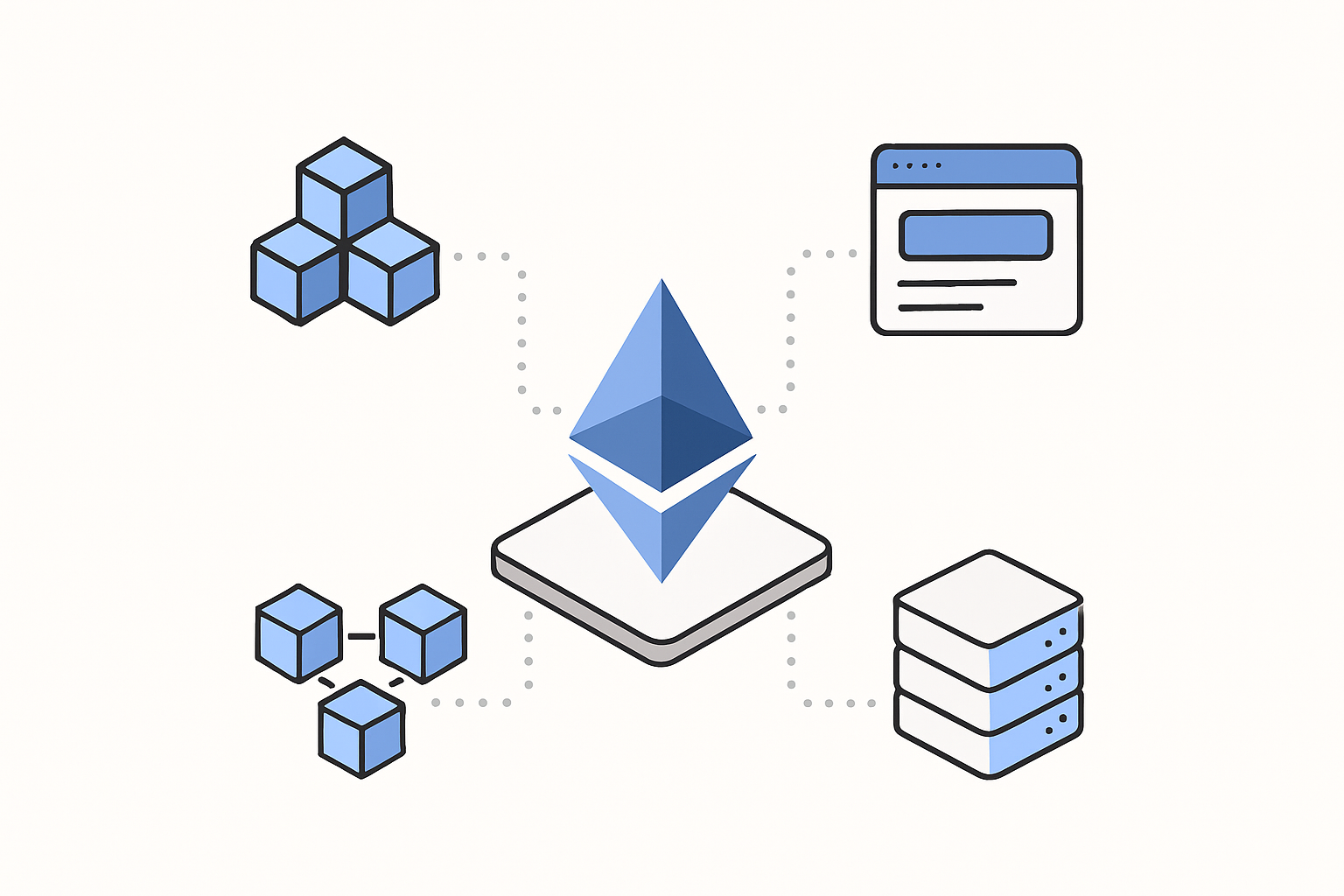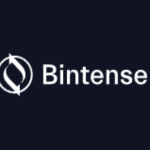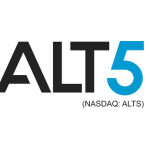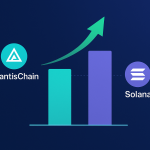Blockchain
Ethereum Developers Embrace Modular Blockchain Architectures For Scalable Web3 Future

Introduction
Ethereum has long been the flagship blockchain for decentralized applications (dApps), smart contracts, and decentralized finance (DeFi). However, its journey hasn’t been without hurdles. Scalability limitations, high gas fees, and latency have often plagued its network during periods of high demand. Now, a new wave of Ethereum developers is pioneering a solution: modular blockchain architectures.
This evolutionary step is not just a technical upgrade; it’s a fundamental rethinking of how blockchains are structured and how they function. As of mid-2025, the Ethereum community is increasingly rallying behind the modular approach, setting the stage for a more robust, scalable, and efficient decentralized ecosystem.
Understanding The Modular Blockchain Paradigm
Traditionally, blockchains like Ethereum have operated as monolithic systems. This means that all core blockchain functions—execution, consensus, and data availability—are handled within a single layer. While this model provides a tightly integrated system, it creates bottlenecks as demand grows.
A modular blockchain, by contrast, separates these core responsibilities into distinct layers or modules. The idea is simple yet revolutionary: let different layers of the blockchain handle different tasks, optimizing each one for performance, cost, and specialization.
Execution Layer: Processes transactions and smart contracts.
Consensus Layer: Validates the correctness of state transitions.
Data Availability Layer: Ensures transaction data is easily accessible.
By offloading specific functions to specialized layers or rollups, Ethereum can scale horizontally and adapt more flexibly to the growing needs of the Web3 ecosystem.
Why Modular Architecture Matters To Ethereum?
Ethereum’s push toward modular architecture isn’t an isolated initiative. It is a response to several pressing challenges the network has faced in recent years. Despite the successful transition to Proof-of-Stake in the Ethereum 2.0 upgrade, many of the original scalability issues persist.
1. Tackling Network Congestion and High Gas Fees
During periods of intense demand, such as NFT launches or DeFi trading booms, Ethereum’s monolithic design struggles to keep up. The result is slow transaction confirmation times and exorbitant gas fees. Modular architectures, especially when combined with Layer 2 rollups, can alleviate this by decentralizing the workload.
2. Enhancing Interoperability and Developer Flexibility
A modular approach allows developers to build more customizable and interoperable dApps. For instance, projects can select a specific execution layer optimized for their needs, such as one designed for privacy or high-speed transactions. This opens up new avenues for experimentation without sacrificing Ethereum’s core security.
3. Improving Scalability without Compromising Security
One of the main promises of modularity is the ability to scale blockchain infrastructure without weakening security guarantees. Since consensus and data availability can remain centralized or semi-centralized while execution layers operate independently, Ethereum maintains its decentralization ethos while offering improved throughput.
The Rise Of Layer 2 Rollups In Ethereum’s Modular Strategy
Central to Ethereum’s modular push is the adoption of Layer 2 rollups. Rollups are scaling solutions that execute transactions outside the main Ethereum chain but post transaction data back to Layer 1 for verification. There are two main types of rollups:
Optimistic Rollups: Assume transactions are valid and allow fraud proofs to challenge incorrect data.
Zero-Knowledge (ZK) Rollups: Use cryptographic proofs to validate transactions before submission.
Popular Layer 2 solutions like Arbitrum, Optimism, and zkSync are at the forefront of this trend, actively contributing to Ethereum’s modular future. These rollups not only reduce transaction fees but also pave the way for new modular execution environments.
Celestia, Eigenlayer, And The Broader Modular Ecosystem
While Ethereum is focusing on modular execution, it is also part of a broader movement that includes protocols like Celestia and EigenLayer. These platforms focus on providing dedicated data availability layers or re-staking mechanisms, further segmenting blockchain responsibilities.
Celestia offers a plug-and-play data availability layer that other blockchains can use, including Ethereum rollups.
EigenLayer allows developers to borrow Ethereum’s security by re-staking ETH across modules.
This cross-pollination between Ethereum and other modular-first platforms enhances the overall ecosystem and encourages innovation beyond the confines of a single chain.
Benefits For dApp Developers And Web3 Entrepreneurs
The modular paradigm offers substantial advantages to developers:
Lower Entry Costs: Modular architectures reduce the infrastructure burden on new projects, enabling faster and cheaper deployment.
Custom Execution Environments: Developers can use tailored execution layers that better suit their app’s needs—whether for speed, privacy, or computation-heavy logic.
Simplified Maintenance: By isolating functions like consensus or data availability, developers can upgrade and maintain components more easily.
Greater Innovation: The flexibility provided by modular design fosters creative experimentation with novel business models and governance structures.
Challenges Facing Ethereum’s Modular Transition
Despite the promise of modularity, this transformation comes with its own set of hurdles:
1. User Experience Complexity
With multiple layers handling different tasks, ensuring a seamless user experience is more difficult. Wallet providers and front-end developers must abstract away this complexity without introducing security vulnerabilities.
2. Fragmentation Risks
While modularity promotes specialization, it also raises the risk of ecosystem fragmentation. Too many custom layers could lead to incompatible platforms and poor interconnectivity, undermining Ethereum’s goal of being a unified global computer.
3. Security Assumptions
Each new layer introduces potential vulnerabilities. Whether it’s a faulty rollup contract or a malicious data availability module, developers must rigorously audit their systems to avoid breaches that could undermine trust.
4. Coordination Overhead
Synchronizing upgrades across multiple layers and modules requires strong community coordination and communication. This is particularly challenging in a decentralized development environment.
Vitalik Buterin’s Vision And Community Support
Ethereum co-founder Vitalik Buterin has been a vocal proponent of modular blockchain design. In his recent blog posts and developer forums, Buterin emphasized the necessity of modular execution and data layers to maintain Ethereum’s competitiveness in a rapidly evolving blockchain landscape.
The Ethereum Foundation and other influential groups are actively funding modular infrastructure projects, signaling broad-based support for this transition. Hackathons, grant programs, and research initiatives are helping accelerate the move toward a fully modular Ethereum.
The Road Ahead: From Monolith To Modular Giant
The transition from monolithic to modular design won’t happen overnight. It requires careful planning, widespread developer adoption, and user education. However, Ethereum has already made considerable progress:
Proto-Danksharding (EIP-4844) is a major milestone that will improve data availability and lower rollup costs.
Verkle Trees are expected to reduce the storage burden on Ethereum nodes, improving scalability.
The rollout of stateless clients will also help modular layers interact more efficiently with the Ethereum base layer.
These advancements are part of a broader roadmap that envisions Ethereum as a scalable, efficient, and modular hub for all things Web3.
Conclusion
Ethereum’s embrace of modular blockchain architecture is more than just a technical trend—it is a strategic pivot that promises to reshape the future of decentralized technology. By offloading core responsibilities to specialized layers, Ethereum can overcome the scalability bottlenecks that have long hindered its growth.
For developers, entrepreneurs, and users, this shift opens up new opportunities to build and interact with dApps in ways that were previously constrained by the limitations of a monolithic design. With the community aligned around this vision and major projects like rollups, Celestia, and EigenLayer leading the charge, the future of Ethereum looks more modular—and more powerful—than ever.








